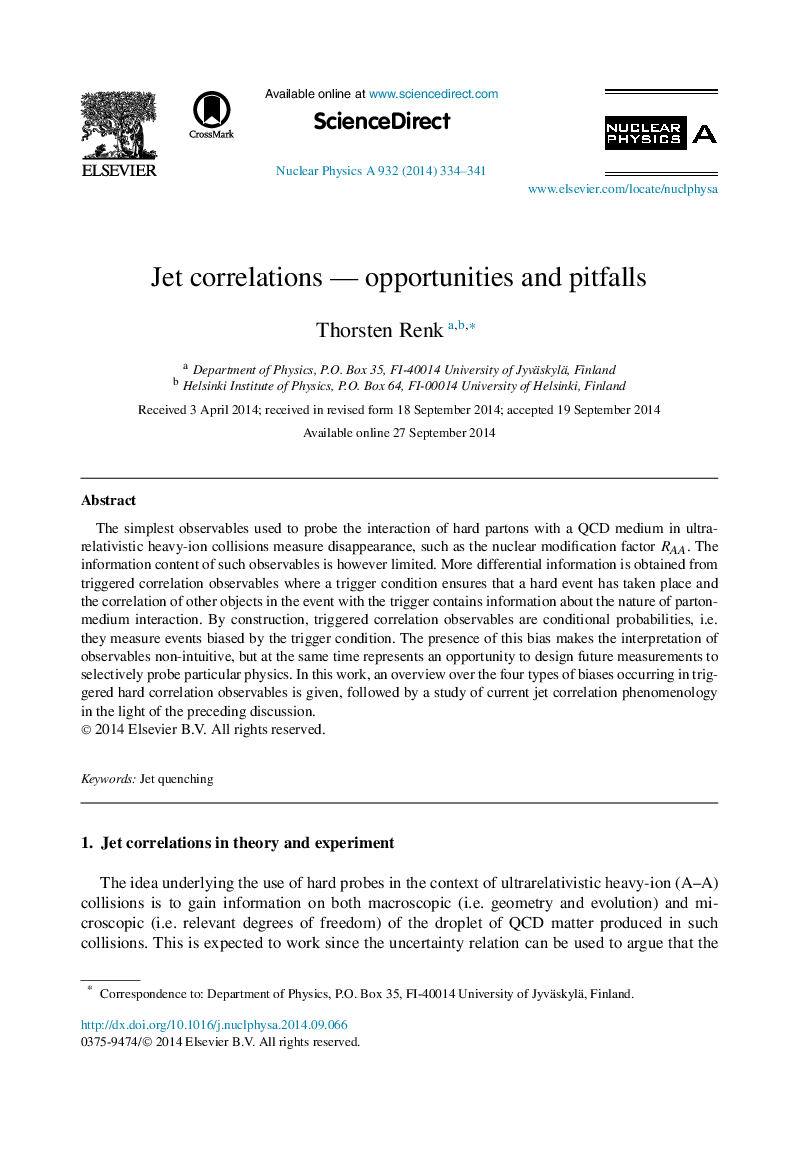| Article ID | Journal | Published Year | Pages | File Type |
|---|---|---|---|---|
| 1835824 | Nuclear Physics A | 2014 | 8 Pages |
The simplest observables used to probe the interaction of hard partons with a QCD medium in ultrarelativistic heavy-ion collisions measure disappearance, such as the nuclear modification factor RAARAA. The information content of such observables is however limited. More differential information is obtained from triggered correlation observables where a trigger condition ensures that a hard event has taken place and the correlation of other objects in the event with the trigger contains information about the nature of parton-medium interaction. By construction, triggered correlation observables are conditional probabilities, i.e. they measure events biased by the trigger condition. The presence of this bias makes the interpretation of observables non-intuitive, but at the same time represents an opportunity to design future measurements to selectively probe particular physics. In this work, an overview over the four types of biases occurring in triggered hard correlation observables is given, followed by a study of current jet correlation phenomenology in the light of the preceding discussion.
